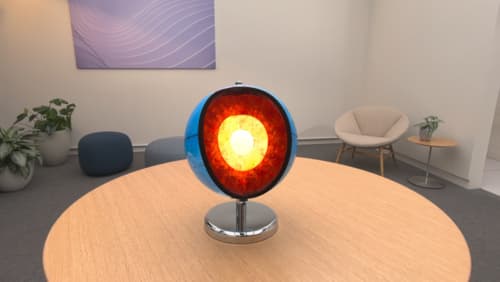Can I import a usdc file generated in Blender to Reality Composer?
Asked on 2024-07-31
1 search
Yes, you can import a USDC file generated in Blender to Reality Composer Pro. The process involves exporting your 3D scene from Blender as a USDC file and then importing it into Reality Composer Pro. Here are the steps:
-
Export from Blender: In Blender, go to the File menu and select the export option. Choose "Universal Scene Description" (USDC) as the file format. You can leave the parameters as default, but make sure to set a root print name, as this will carry over to Reality Composer Pro.
-
Import to Reality Composer Pro: Open Reality Composer Pro and import the USDC file into a new project. You will be able to modify the materials for each piece, especially if you have named your objects and materials in Blender.
For more detailed guidance, you can refer to the session Create custom environments for your immersive apps in visionOS.
Relevant Sessions
- Create custom environments for your immersive apps in visionOS
- Optimize your 3D assets for spatial computing
These sessions provide comprehensive information on exporting from Blender and importing into Reality Composer Pro, as well as optimizing your 3D assets for spatial computing.

Explore object tracking for visionOS
Find out how you can use object tracking to turn real-world objects into virtual anchors in your visionOS app. Learn how you can build spatial experiences with object tracking from start to finish. Find out how to create a reference object using machine learning in Create ML and attach content relative to your target object in Reality Composer Pro, RealityKit or ARKit APIs.

Optimize your 3D assets for spatial computing
Dive into an end-to-end workflow for optimized 3D asset creation. Discover best practices for optimizing meshes, materials, and textures in your digital content creation tool. Learn how to harness shader graph, baking, and material instances to enhance your 3D scene while optimizing performance. Take advantage of native tools to work more effectively with your assets and improve your app’s performance.

What’s new in USD and MaterialX
Explore updates to Universal Scene Description and MaterialX support on Apple platforms. Discover how these technologies provide a foundation for 3D content creation and delivery, and learn how they can help streamline your workflows for creating great spatial experiences. Learn about USD and MaterialX support in RealityKit and Storm, advancements in our system-provided tooling, and more.
